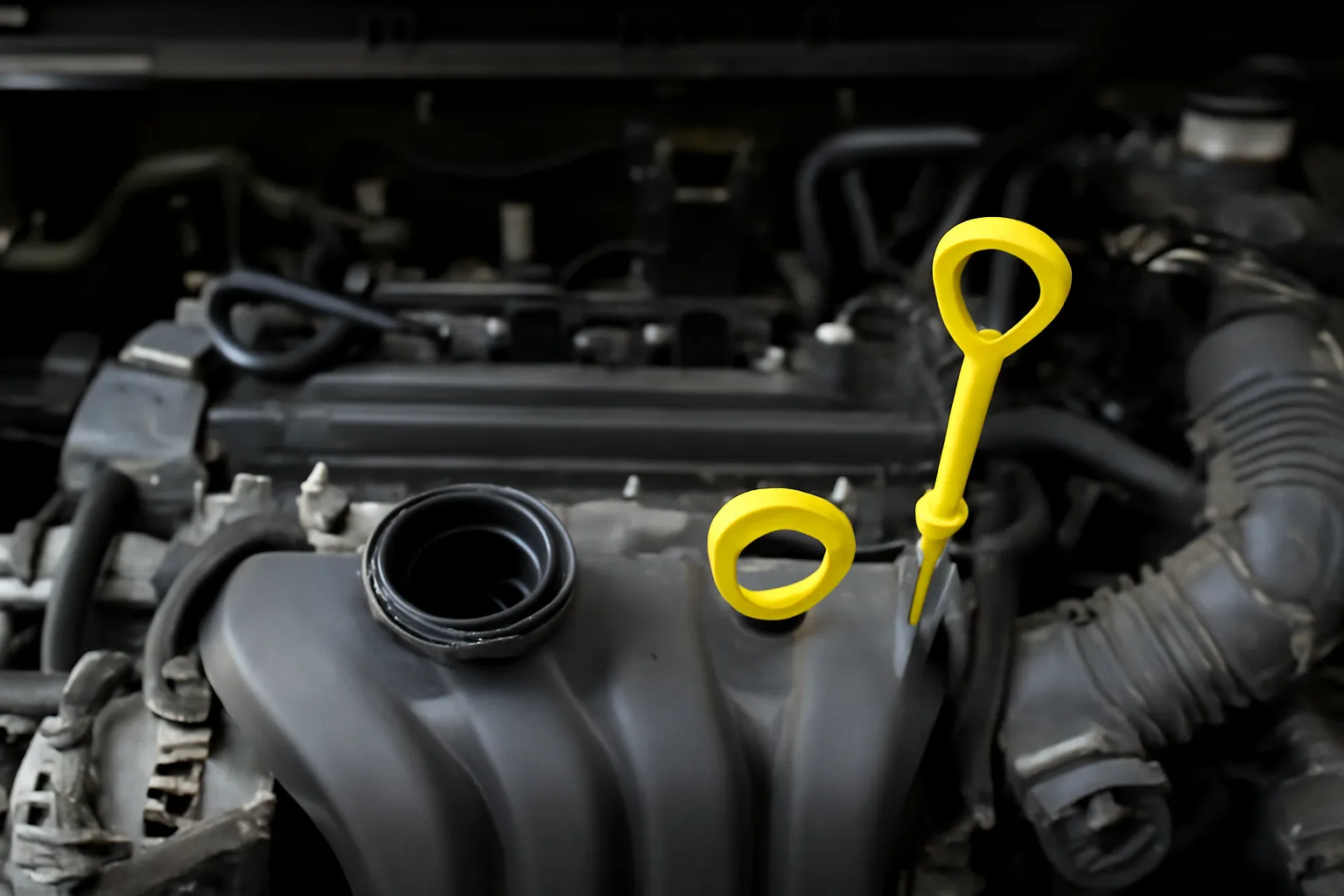Maintaining your vehicle’s engine in optimal condition is essential for its performance and longevity. One crucial aspect of engine care is ensuring the right engine oil temperature, amount, and type. When the engine oil is at the right temperature, your car performs smoothly, minimizing wear and tear on internal components. Let’s explore what constitutes the ideal engine oil temperature, the correct oil amount, and the appropriate type of engine oil for your car.
Are you concerned about your engine oil temperature, amount, or type? Discover how the right engine oil temperature improves your car’s performance and longevity. Learn more about how to maintain your engine in peak condition.
Engine Oil Appropriate Amount
Having the right amount of oil in your engine is critical to prevent damage. Too little oil can lead to inadequate lubrication, while too much can cause pressure buildup. But how do you determine the proper amount?
Why the Right Oil Amount Matters
The engine oil level directly impacts the engine’s ability to function smoothly. When the oil is at the right level, it circulates freely throughout the engine, ensuring that all moving parts are lubricated. Too much oil can cause excess pressure, leading to leaks, whereas too little oil can result in friction, overheating, and potential engine damage.
How to Check Engine Oil Levels
Checking your engine oil is easy, and it’s an essential task for regular car maintenance. Here’s a step-by-step guide:
-
Park your car on a level surface Make sure your car is stationary and on a flat surface to get an accurate reading.
-
Locate the dipstick Find the dipstick, usually marked with a brightly colored ring (often yellow or orange).
-
Pull out the dipstick and wipe it clean Wipe the dipstick with a clean cloth, then dip it back into the tube.
-
Check the oil level Remove the dipstick again and examine the oil level. The oil should fall between the “minimum” and “maximum” marks on the dipstick.
Common Issues with Oil Amount
Some of the most common issues related to oil amount include overfilling or underfilling, both of which can cause severe engine problems. Overfilled oil can damage the engine seals, while too little oil increases the risk of engine components grinding against each other, causing permanent damage.
👉Check your oil levels today!👈
Appropriate Engine Oil
Choosing the right engine oil for your vehicle ensures that the engine runs smoothly and efficiently, especially during the challenging conditions of high speeds or extreme temperatures.
Types of Engine Oil
There are several different types of engine oil, each suited for different conditions. Some of the most common are:
-
Conventional Oil This is the most common type, generally recommended for older cars or vehicles with simple engine designs.
-
Synthetic Oil A higher-quality oil that performs better under extreme conditions, synthetic oil is ideal for high-performance or modern engines.
-
Synthetic Blend Oil This is a mixture of synthetic and conventional oil. It’s more affordable than pure synthetic oil but offers better protection than conventional oil.
-
High-Mileage Oil Designed for vehicles with over 75,000 miles, this oil has additives to prevent leaks and reduce oil consumption.
How to Choose the Right Oil for Your Engine
The type of engine oil you choose depends largely on your vehicle’s make, model, and age. Always refer to the owner’s manual for the manufacturer’s recommendations on the type and grade of oil suitable for your engine. Using the correct viscosity grade is essential because it ensures proper lubrication at various temperatures. For example, a 5W-30 oil works well for cold weather conditions, while a 10W-40 oil is better suited for warmer climates.
Why Using the Right Oil is Critical
Using the wrong oil type can have significant negative effects on your engine. It can result in poor engine performance, overheating, or even permanent engine damage. Choosing the right engine oil also improves fuel efficiency and minimizes engine wear, ensuring the longevity of your vehicle.
👉Find the best engine oil for your car👈
Engine Appropriate Temperature
Engine oil plays a crucial role in maintaining the right temperature within the engine. If the oil is too cold, it won’t lubricate properly, and if it’s too hot, it may break down, leading to engine wear.
Why Engine Temperature Matters
Engine oil needs to reach an optimal temperature to function properly. When the engine oil is cold, it’s thicker, and it doesn’t flow as easily, leading to poor lubrication. As the engine heats up, the oil thins out, which improves its ability to flow and lubricate the engine components. If the oil temperature gets too high, the oil can break down and lose its lubricating properties, potentially damaging the engine.
How to Monitor Engine Oil Temperature
Many modern cars come equipped with an oil temperature gauge that provides real-time information on the engine’s oil temperature. If your car doesn’t have this feature, you can keep an eye on the engine’s general temperature using the dashboard coolant gauge. Generally, your engine oil should be between 180°F to 200°F (82°C to 93°C) when it’s running at its optimal temperature. This range ensures that the oil performs well, offering the right balance between lubrication and protection.
Common Problems with Engine Oil Temperature
If the engine oil temperature is consistently too high, it may indicate a problem such as a blocked oil cooler or a lack of oil circulation. Overheating can cause serious damage to the engine components and can even lead to a complete engine failure if not addressed promptly.
👉Monitor your engine oil temperature👈
Conclusion
Proper engine oil temperature, amount, and type are essential factors in keeping your vehicle running smoothly and efficiently. Regularly checking your oil levels and ensuring that your oil is at the appropriate temperature can prevent major engine issues. Additionally, choosing the right oil type ensures that your engine remains well-lubricated and protected from excessive wear and tear.
Remember that maintaining the right oil amount and temperature isn’t just about engine health—it’s also about extending the life of your car and ensuring its optimal performance. By keeping an eye on these factors and following manufacturer recommendations, you can keep your engine running like new for years to come.
As the famous mechanic and car enthusiast Carroll Shelby once said, “The only time you have too much fuel is when you’re on fire.” Apply this principle to oil: too much or too little is never good! Always keep your engine oil at the right level, type, and temperature, and your car will thank you for it.






